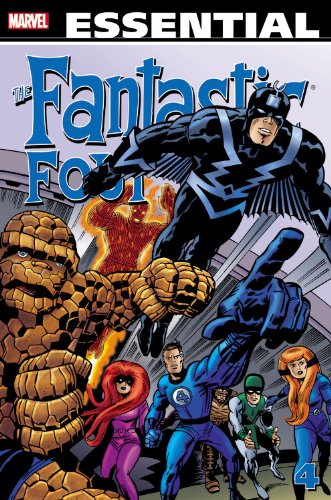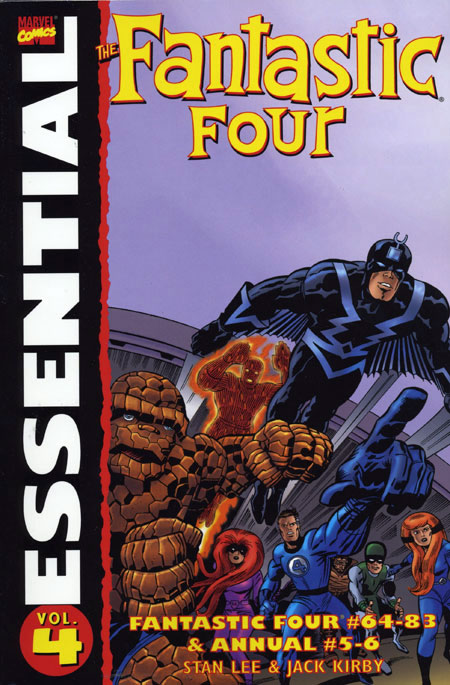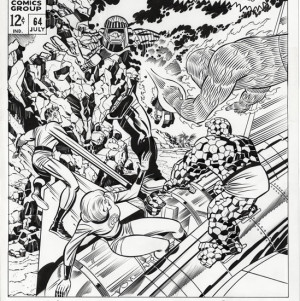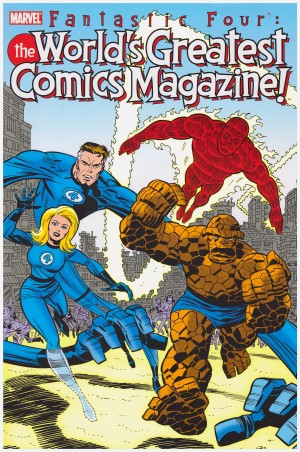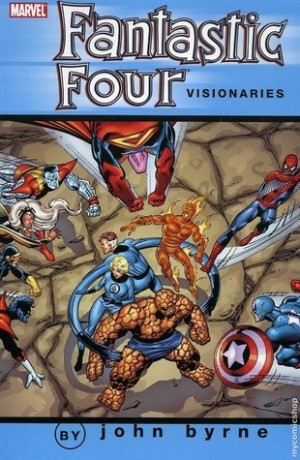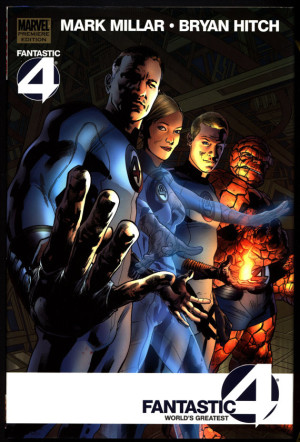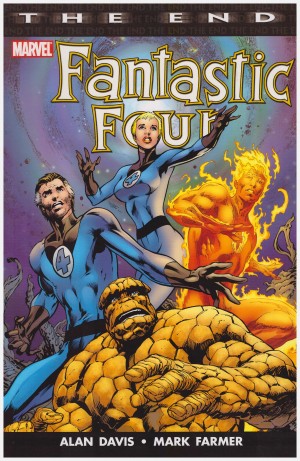Review by Graham Johnstone
Stan Lee and Jack Kirby’s phenomenal run on the Fantastic Four spanned the 1960s. This fourth of five ‘phone books’ starts in 1967 and is the highpoint. By now the FF increasingly venture beyond the metropolitan skyscrapers, to other countries and cultures, outer space, and alternative dimensions.
Kirby thrives on the visual opportunities of super-powers. There’s the stylised geometry of The Thing, the dynamic movements of the flying Torch and the infinitely malleable Mister Fantastic, and the Invisible Girl in dotted lines beautifully arranged over the backgrounds. There are now fewer panels per page – sacrificing narrative length for visual immersion. Knowing that Kirby rattled through several pages a day, just emphasises what an awesome talent he was.
By this time Kirby was fully plotting the stories, and he brings a powerful, deep-rooted, almost mythological, sense of narrative. The more analytical Lee, now just adds the text. It’s wry and ironic, sometimes talking directly to the reader. One caption reads: “Exactly two seconds later..*”, and a footnote caption adds: “Not that it would really matter even if it were three seconds later! —Stan”.
Joe Sinnott’s inking retains Kirby’s distinctive style while bringing naturalism and refinement. Sinnott became so much part of the look of the series that he was kept on for years after Kirby left. The art perhaps loses some of the naive charm of the earlier issues, but that’s progress. Frank Giacoia’s lush ripping brushstrokes on a Surfer short, are also quite stunning.
Story strands by this time ran across issues. A run-of-the mill encounter with Sandman traps Reed in the dangerous Negative Zone. His team mates seek help from the Inhumans with their specialist abilities. As they free Reed, they inadvertently release Blastaar, a dangerous criminal dumped in the Zone, out of harms way. Other events reactivate the Kree ‘The Sentry Sinister’. Then a troubling dream shared by the whole team presages the return of the Kree, in the form of Ronan, a sort of intergalactic Sheriff Officer, to exact “justice”.
Perhaps the most interesting supporting character is Alicia Masters, a blind sculptor with exceptional empathy, and an innocent fearlessness. She brings out the sensitive side of the defensive, sarcastic Thing, and was previously crucial in convincing the Silver Surfer to support and protect humanity. Here she reaches out to the embryonic artificial human, known here simply as Him, and later to become Adam Warlock. While the other three revel in their celebrity glamour, the Thing, tormented by his monstrous exterior, yearns for an ordinary life with Alicia. An ongoing story strand is Reed’s attempts to revert him back to normal human Ben Grimm. It never goes quite as planned, but here there seems to be some resolution.
The two longer stories reprinted from Fantastic Four Annuals use the greater length for life-changing developments for Reed and Sue.
This is some of Kirby’s best and most polished artwork. Don’t scrutinise the stories too hard, and you can enjoy some of the thrilling best of 1960s Marvel.
These stories are also available in colour in Marvel Masterworks Fantastic Four volumes 7 and 8, and Omnibus 3.
